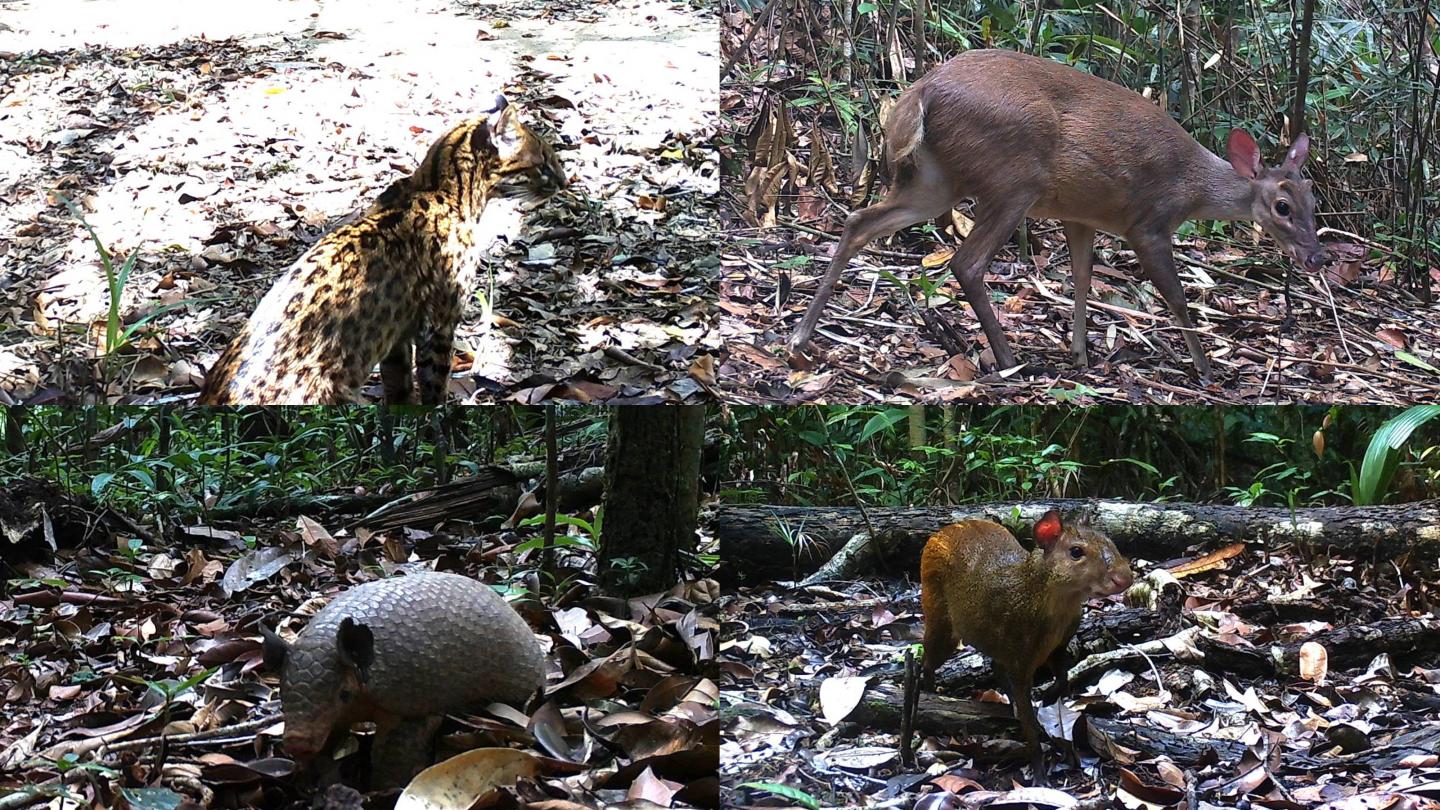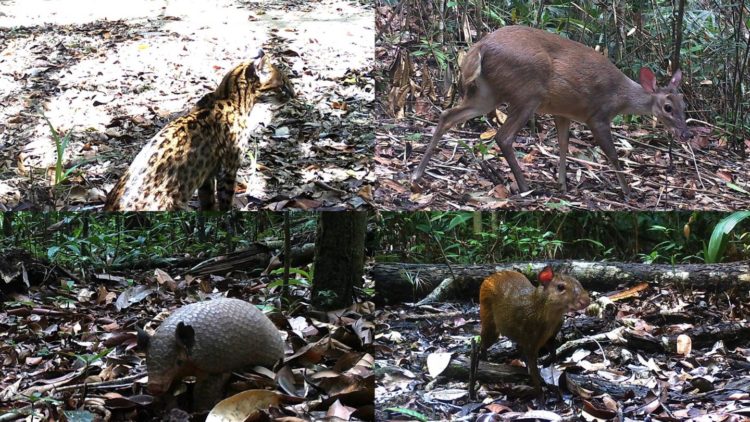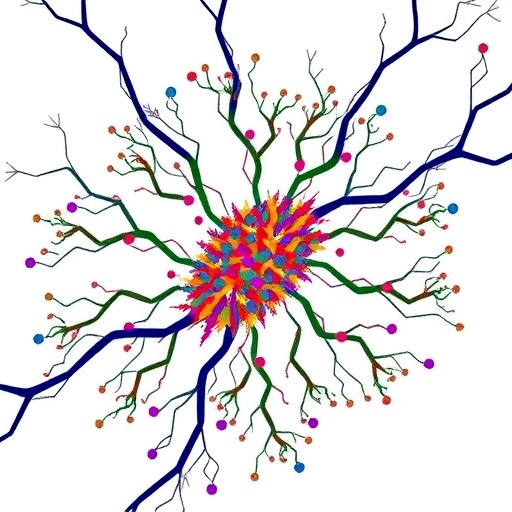In an article published in PNAS, Brazilian researchers stress the need for agricultural management that favors the maintenance of wildlife

Credit: photo: ICMBio / CENAP)
Margays (Leopardus wiedii), small wild cats living in forest areas fragmented by agriculture near Campinas and Botucatu in São Paulo State, Brazil, prey on animals inhabiting nearby sugarcane plantations, such as birds and small rodents.
The diet of other mammals, such as the herbivorous Wild cavy (Cavia aperea) or the omnivorous Crab-eating fox (Cerdocyon thous), is also influenced by the region’s agriculture. They live in areas of native vegetation but often have to seek food in fields of corn, sugarcane or pasture in order to survive. Each in its own way, the Cougar (Puma concolor), Capybara (Hydrochoerus hydrochaeris), Brocket deer (Mazama spp.), Ocelot (Leopardus pardalis) and Crab-eating raccoon (Procyon cancrivorus) have also adapted their diet in comparison with animals living in large areas of well-preserved forest.
These examples, described in an article published in Proceedings of the National Academy of Sciences (PNAS), confirm the hypothesis that in addition to its negative effect on wildlife in terms of species richness, diversity and abundance, agriculture also impacts the diet and habitat use of wild mammals living in areas of fragmented forest near croplands and pasturelands.
The study was performed by researchers affiliated with the University of São Paulo’s Luiz de Queiroz College of Agriculture (ESALQ-USP) and Center for Nuclear Energy in Agriculture (CENA-USP), São Paulo State University (UNESP) and the Chico Mendes Institute for Biodiversity Conservation (ICMBio). It was supported by São Paulo Research Foundation – FAPESP via a project led by Katia Maria Paschoaletto Micchi de Barros Ferraz (ESALQ-USP). It also received funding from Fundação Boticário.
“Forest remnants and the agricultural matrix aren’t separate. There’s an interface between these areas. It’s hardly news that animals need to find food in plantations, but this practice hadn’t been quantified until now. I should stress that the diet in question isn’t ideal. It’s a matter of survival,” said Marcelo Magioli, who at the time had a PhD scholarship from FAPESP and is first author of the article.
According to the study, the impact of agriculture on conservation relates not just to deforestation and forest fragmentation but also to the alterations brought about by the process in the diet of wild animals. The researchers stress the need for adequate management of human-modified environments to support wildlife survival.
“Our findings point to the need for more favorable agricultural management to support these animals and underscore the importance of the Brazilian Forest Code and of maintaining legal reserves and permanent conservation areas [APPs],” Ferraz said.
Records of feeding habits
To measure how much the diet of these mammals had been altered by the influence of the agricultural matrix, the researchers analyzed stable carbon and nitrogen isotopes in the animals’ fur. The method, widely used in trophic studies of marine animals, identifies the type of food consumed in a period of approximately three months and the individual’s position in the food chain.
Because the Margay is an endangered species and many of these other animals are also threatened with extinction, the researchers used noninvasive techniques such as hair traps and collection of droppings. Samples were collected in four areas of São Paulo State – two areas next to croplands in Campinas and Botucatu and two conserved areas in Serra do Mar and Serra de Paranapiacaba mountain ranges.
Samples were collected from 29 species of mammals, with 194 samples coming from individuals that lived in human-modified areas and 126 from individuals in well-preserved forest areas.
“From previous studies using GPS collars and camera traps, we knew the animals moved through these areas,” Magioli said. “However, stable isotope analysis told us where they were feeding and how important each food source was in their diet.”
So near yet so far
According to the researchers, while 34.5% of individuals based on forest fragments within human-modified areas fed only on agricultural resources, 67.5% of the animals living in large areas of well-preserved forest fed mainly on forest resources.
“There’s a very big difference in the diets of these two groups of mammals. Given the different species compositions of the two types of areas, we grouped the animals according to diet: carnivores, omnivores, herbivores, frugivores and insectivores,” Magioli told.
In the comparison, frugivores and insectivores consumed the same resources regardless of where they lived. Herbivores and omnivores inhabiting forest fragments were the most affected and tended to consume agricultural resources. Carnivores in this environment close to croplands consumed a relatively high proportion of prey that feed on agricultural resources.
“We can conclude that in landscapes with scant forest cover, small fragments prove insufficient to supply the resources species need,” Magioli said.
Another finding of the research relates to the effects of organic fertilizer on the animals, especially herbivores, and the impact of sugarcane burning on soil nitrogen cycling and hence on the plants consumed by the animals.
“We observed a difference in nitrogen isotope values in the fur of animals living in forest fragments. Because they consume resources from the agricultural matrix, nitrogen levels are higher, as is the case in the soil, for example. Nitrogen levels typically rise from the bottom to the top of the food chain, so it’s harder to explain the order of the food chain for these modified areas, different as it is from that of preserved areas,” Magioli said.
###
About São Paulo Research Foundation (FAPESP)
The São Paulo Research Foundation (FAPESP) is a public institution with the mission of supporting scientific research in all fields of knowledge by awarding scholarships, fellowships and grants to investigators linked with higher education and research institutions in the State of São Paulo, Brazil. FAPESP is aware that the very best research can only be done by working with the best researchers internationally. Therefore, it has established partnerships with funding agencies, higher education, private companies, and research organizations in other countries known for the quality of their research and has been encouraging scientists funded by its grants to further develop their international collaboration. You can learn more about FAPESP at http://www.
Media Contact
Joao Carlos Silva
[email protected]
55-113-838-4381
Related Journal Article
http://dx.





